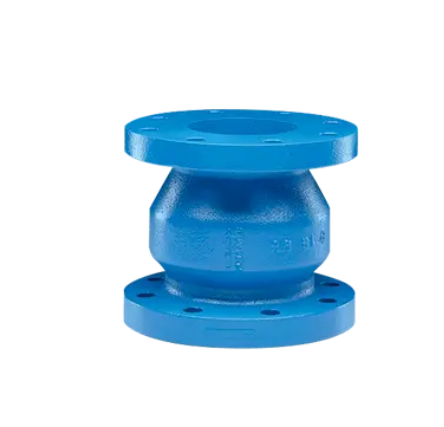Check valves, also known as non-return valves, are valves that allow a fluid (either liquid or gas) to flow
through the system in only one direction. Check valves are normally two-port valves, having two openings in the body. One opening only allows fluids to enter the body, and the other only allows fluids to exit.
Check valves are used in many industrial fluid systems such as those in chemical and power plants, refineries,oil fields, mines and water/waste water treatment. They are used when multiple media require mixing into a media stream. Multiple check valves can be installed on each of the individual fluid streams to prevent any
extraneous mixing of those fluids back into the original sources. For example, if a fuel and an oxidizer are to be mixed, then check valves will normally be used on both the fuel and oxidizer sources to ensure that the original gas cylinders remain pure and in an undiluted state.
An essential element in the design of an efficient pumping system is the proper selection of the check valves.
The check valve must, of course, automatically open to allow forward flow and automatically return to its
closed position to prevent a reverse flow when the pump is not in operation. Check valves perform a critical function in preventing reverse flows of fluids, protecting plant and mechanical equipment from damage.
However, there are a wide variety of different types, and significant differences in performance and duties even within a single type of valve. We will specifically be looking at the Lift Check, Ball Check, Swing Check and Pump
Control Valves for this comparison.
Another consideration when designing a pumping system is to choose check valves that minimize energy
consumption. Wastewater treatment plants in the United States consume more than 75 billion kWh of energy annually. The pumping costs to overcome static head and friction loses account for 80% of that alone. Most of the time the money saved by installing a series of improperly selected check valves may be eclipsed by the additional pumping costs to run the systems because of this choice.
Unfortunately, every pumping system has the potential to undergo some amount of water hammer or slam.
Water hammer is caused by the sudden stoppage of a reversing flow as it goes through a closing valve. The stopping of the reverse flow transforms the kinetic energy of a flowing fluid into a pressure shock wave, which runs back down the pipes. The pressure surge associated with these shock waves can, in the worst case, cause flanged joints to rupture, or at the very least cause severe noise and vibration in the piping system itself. In order to minimize these pressure shock waves, a check valve must be selected that closes very quickly once the pump is shut down and prevents the reversing of the fluid flow.
